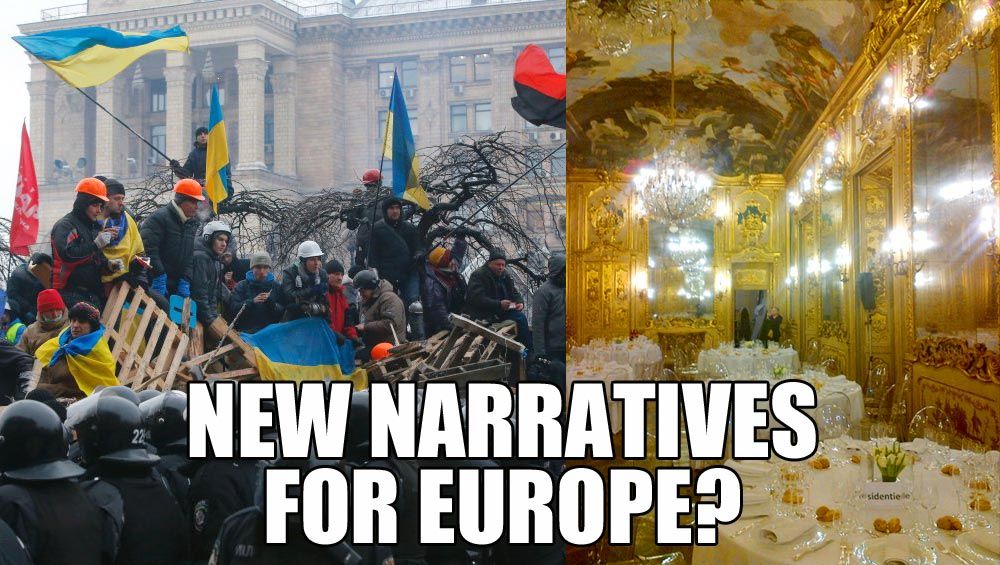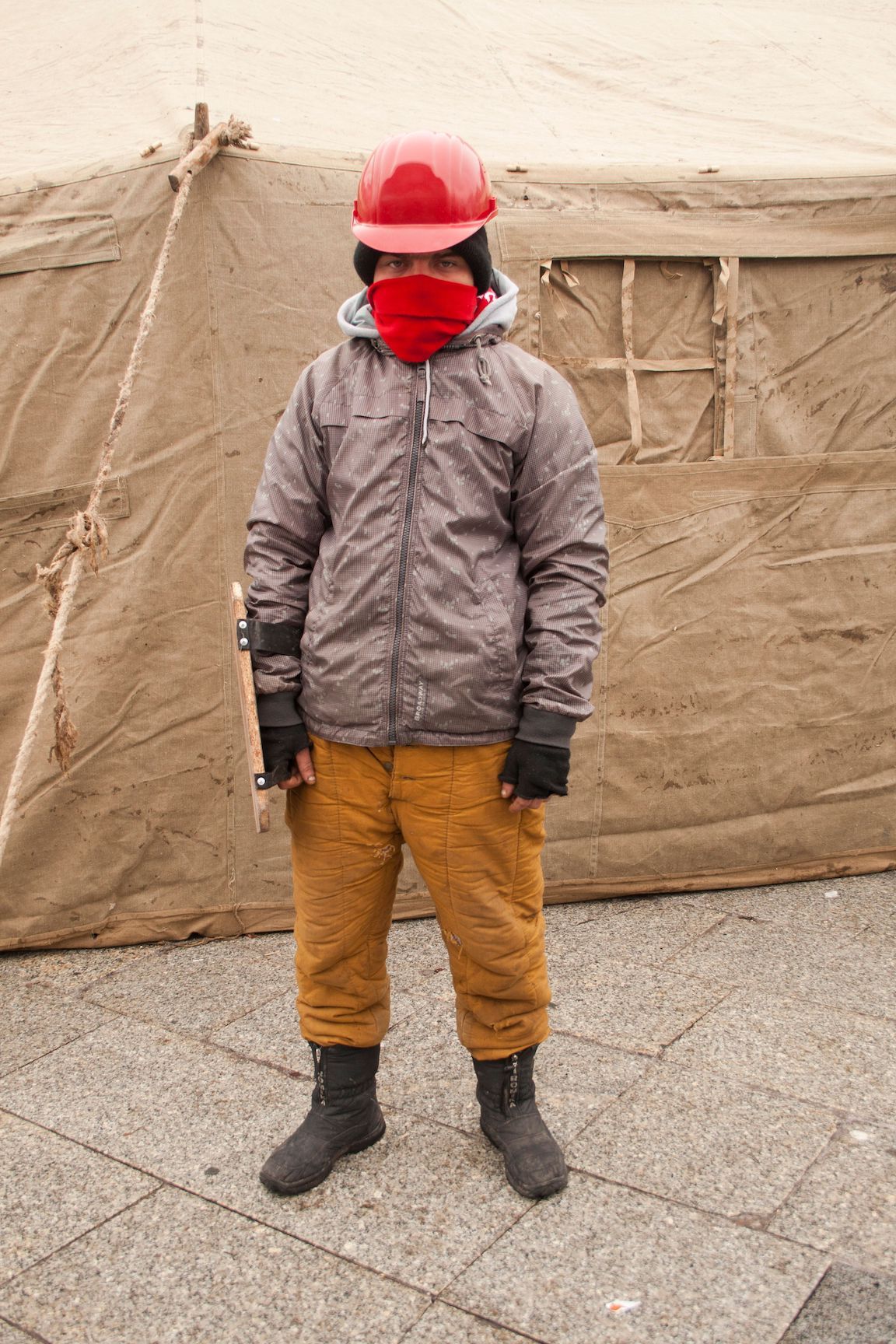“REVOLUTION STARTS IN HELL”—Russian Art Collective CHTO DELAT Speaks Out
The events of recent months have confronted the Russian artist collective, Chto Delat (“What Is To Be Done?”) with a changed reality—“A new Cold War atmosphere, an escalating search for enemies, ever-tighter repression of all dissent, and an open military confrontation with Ukraine leaving thousands of dead on both sides.” Their exhibition, “Time Capsule. Artistic Report on Catastrophe and Utopia,”at KOW gallery in Berlin—a modified version of their earlier project at the Secession in Vienna—marks a turning point as the group struggles to imagine an alternative future from the viewpoint of a cataclysmic present. Chto Delat member Oxana Timofeeva tells us, “Forget hope: revolution starts in hell.” And hell is the now—yet, for the time being, the question, “What Is to Be Done?” remains answered.
032c spoke with Chto Delat, to unravel some of the questions central to their work.

Your previous anti-fascist sculpture—Paper Soldier—was set alight by arsonists outside the Berliner Festspiele. Your current exhibition at KOW in Berlin resurrects the zombified figure and presents its inner monologue—accompanied by additional models and film footage. What motivated the decision to revive and build upon this effigy?
For us the history of Paper Soldier—originally installed in Vienna as the centerpiece of our festival “What is monumental today?”—was a very crucial experience. It began as a response to the urgencies of a historical moment in which many ideological traps from the past were being replayed. Like Stalinism versus Nazism. Then it moved to Berlin, very last minute, when Berlin Festspiele decided to install it outside its entrance. We were not sure about this at first but decided that it made sense, and so the sculpture’s travel story unfolded organically. But the arson that happened there was quite shocking—especially in a context where your Facebook feed is full of burned corpses from the Ukrainian war. To see your piece of art in the same state is pretty painful. So one needs to deal with this trauma, and for our show at Secession we decided to resurrect it in a kind of zombie-angel state that provokes the Benjamin idea of “history as catastrophe”—something we have been reconsidering in our collective discussions.
Your video, The Excluded, A Moment of Danger, concerns itself with where we are situated within a collective history. On the flip side, the exhibition’s name, Time Capsule. Artistic Report on Catastrophes and Utopia, would suggest a transhistorical, even ahistorical lens within the exhibition. Can you describe the modes within which the exhibition addresses itself as a type of history?
Again here—in the wake of a Benjamin tradition of thinking—we consider history in a non-linear way. It is not a-historical, however, but its opposite—it is how Historical Materialism could deal with the issues of progress and barbarism. But after the murder of Russian oppositional politician, Boris Nemtsov, which happened during the opening of our show at KOW, you could say that the film, in some way, forecasted this terrible and dangerous moment in our history. In light of this event, a key scene, in which one political activist is beaten up after her solo street while carrying the slogan “Russia kills,” acquires a rather gloomy and precise meaning.

I’m curious about the way Chto Delat relates to the Russian avant-garde of the early 20th century—how the more digital aspects of the exhibition engage with the revival of the avant-garde theatrical tradition. How would you figure yourselves within such a movement?
We are very interested in and have greatly contributed to the discussion on the avant-garde of today—you could read the recent publication by Marc Leger and John Roberts to better understand this. Generally speaking, one can not create any kind of politically engaged artistic statement and ignore the tradition of the Soviet avant-garde. And this is fair enough—all radical artists live inside a tradition. Our work is far from being a simple repetition of the formal discoveries of that time, however. It is more about new experiments with collective authorship; the emancipatory and educational function of art; the spirit of collectivism; building a new type of relationship between movement and aesthetics, and so on. But, in our case, connection to the past cannot be reduced simply to Russian history—I would say that references to Situationism, Godard, Brecht, and Surrealism are more fruitful for deciphering the codes behind our work and thinking.
Your work fuses activism and art, directly challenging the status quo of capitalism. There have been so many instantiations of revolutionary avant-gardes—so many artistic challenges to capitalism. How do they continue to be relevant, or be contemporary?
I think they will never stop being relevant as long as we have a class society and injustice, and a generic urge for emancipation, and the will to live in non-alienatedworld.

The idea that cataclysmic despair—as opposed to hope—is the only catalyst for revolution is quite an unnerving idea, particularly to Western positivist consciousness. How does this despair manifest itself within your work?
If you watch our film, which is a pretty realistic picture of Russian society today, then you will see that it directly manifests itself. But as long as we can find a powerful visual form to articulate this desperation, I guess we can provide a certain form of hope. I do not exactly share the idea that the despair is the only thing which left to us, just opposite. I believe not only in the possibility to reflect our terrible historical moment, but also in the possibility of developing those practices that break through the gloomy situation of today and address the future generation as equal partners in a dialogue, in the same way we are able to address the dead.
This marks KOW’s third chapter in their “One Year of Filmmakers” series, and Chto Delat’s first monographic show at a gallery.

